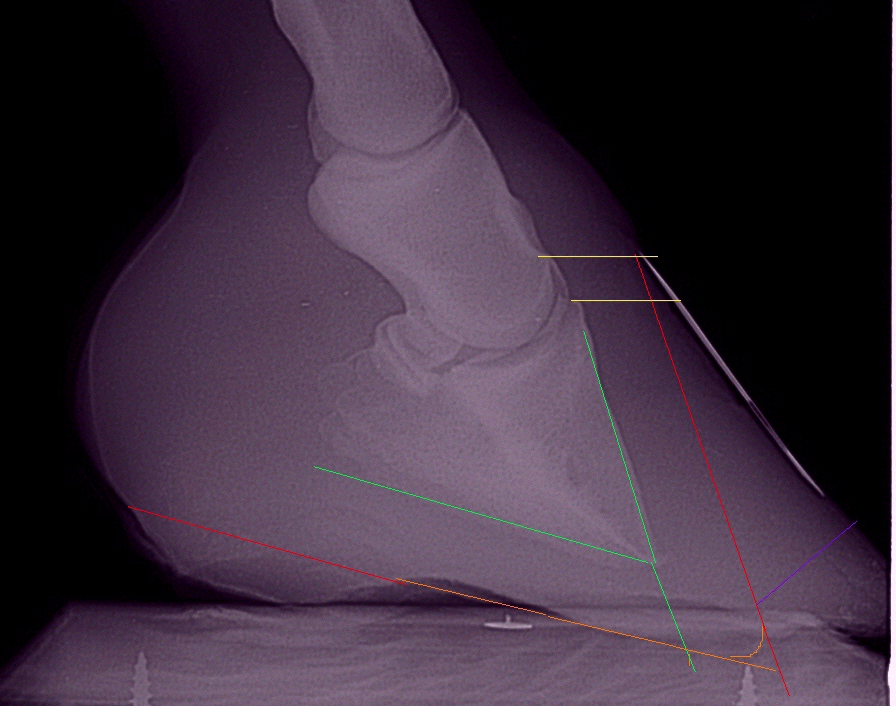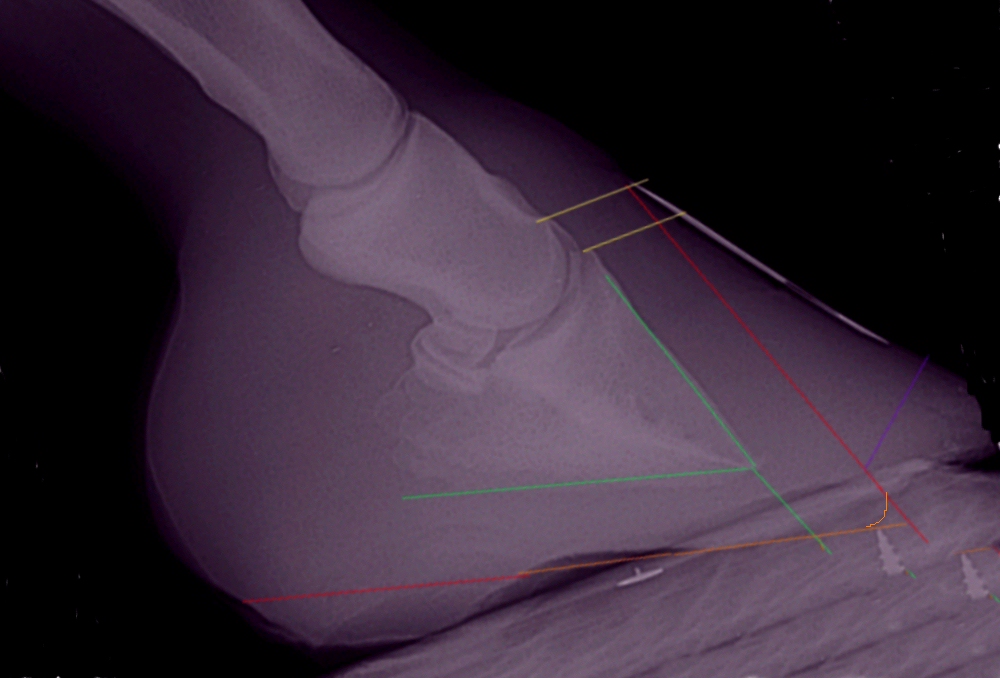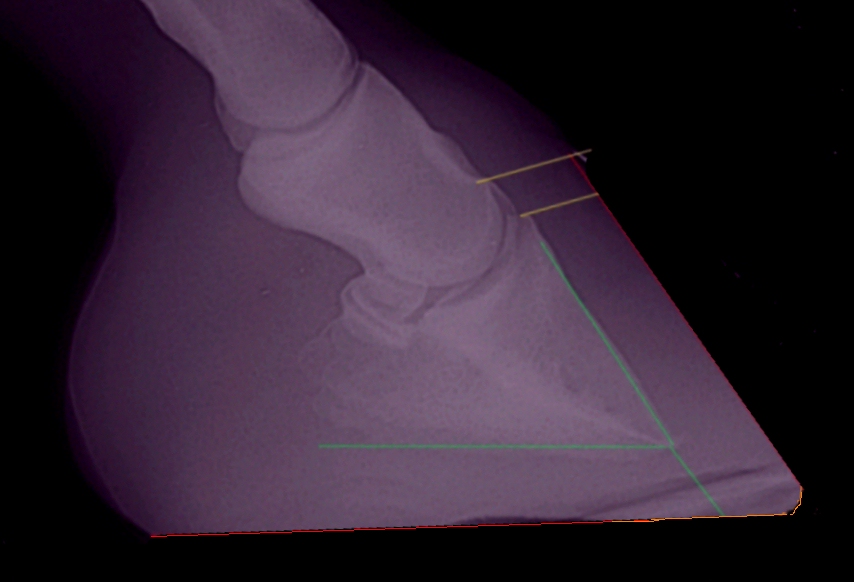I gave a talk to the Charente Horse Group today on EMS, PPID and foot rehabilitation. It's always so useful to get an insight into other people's perception of laminitis, and today several people commented that they hadn't realised that P3 (the pedal/coffin bone) could be returned to its correct position - they thought that once rotation or sinking had happened, the horse was stuck with it. I guess this comes from the fact that you can't actually move the bone - but what you can do is restore it to its correct position by trimming the hoof to hug the bone again - which generally involves reducing the palmar angle pretty much immediately (lowering the heels) and setting up the walls so that they grow down from the coronet at the correct angle with tight laminar connections (bringing the toe back and bevelling to where the wall should be). The ECIR group and Dr Eleanor Kellon have been advocating that "the proper trim is one where the hoof capsule correctly conforms to the bones within it" for many years, and have guided owners and equine professionals through hundreds of successful rehabilitations. Most of Pete Ramey's excellent book "Care and Rehabilitation of the Equine Foot" is about trimming the hoof to P3 and the internal structures of the foot. I guess I'd been lulled into a false sense of security, thinking that everyone knew that laminitis rehab, in the majority of cases, is not much more than correct trimming (and protection).
Do people really still think that rotation or sinking following laminitis is a death sentence?! I know past research (which perhaps belongs in the past!) has claimed that an angle of rotation greater than 11.5 degrees, or 15 degrees, gives a poor prognosis. Well yes, I'd agree if the poor horse is just left like that! But I've seen horses with rotation of well over 20' make full recoveries and go back to their previous work, often with the rehab trimming being done by their owners, or a farrier who is following instructions by email! They simply need a correct trim - the trim that realigns the hoof to the bone - and to then have that trim kept perfect while the new hoof grows (plus the cause of the laminitis must have been identified and removed/treated and correct management must be in place).
And sadly I'm well aware that many horses are not getting their feet correctly realigned following laminitis - that's one of the main reason owners seek help on the internet. To quote Dr Kellon and the ECIR group again, "too many horses fail to recover from laminitis due to incorrect trimming." But once they get that correct trim, they can and usually do recover.
Do people really still think that rotation or sinking following laminitis is a death sentence?! I know past research (which perhaps belongs in the past!) has claimed that an angle of rotation greater than 11.5 degrees, or 15 degrees, gives a poor prognosis. Well yes, I'd agree if the poor horse is just left like that! But I've seen horses with rotation of well over 20' make full recoveries and go back to their previous work, often with the rehab trimming being done by their owners, or a farrier who is following instructions by email! They simply need a correct trim - the trim that realigns the hoof to the bone - and to then have that trim kept perfect while the new hoof grows (plus the cause of the laminitis must have been identified and removed/treated and correct management must be in place).
And sadly I'm well aware that many horses are not getting their feet correctly realigned following laminitis - that's one of the main reason owners seek help on the internet. To quote Dr Kellon and the ECIR group again, "too many horses fail to recover from laminitis due to incorrect trimming." But once they get that correct trim, they can and usually do recover.
For more on realigning feet following laminitis, have a look at The Derotating Trim:
http://www.thelaminitissite.org/feet.html
or check out Sorrel's story:
http://www.thelaminitissite.org/sorrel.html
http://www.thelaminitissite.org/feet.html
or check out Sorrel's story:
http://www.thelaminitissite.org/sorrel.html




 RSS Feed
RSS Feed